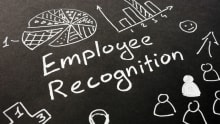Building an employee benefits strategy for the future

Employee support has taken the spotlight since COVID-19 started, in the form of more structured and customised benefits that take a wider range of needs into consideration.
“We're starting to see benefits become a lot more individualised,” says Joan Collar, Leader at Mercer Marsh Benefits Asia-Pacific. “Even though financial security, well-being, and overall wellness still exist as very broad themes, we're looking at a much more targeted and personable approach today.”
At Mercer's 2021 Regional HR Conference, Jeanne Ding, who is leading Global Benefits and HR Digital Transformation at Mapletree, shared how Mapletree is exploring a more holistic and forward-thinking benefits strategy, one that can be sustainable even after thepandemic ends.
Customise at both individual and geographical scale
For organisations that operate across a wide range of geographies and cultures, it's not possible to have a one-size-fits-all strategy for benefits and other forms of employee support. With Mapletree's operations spanning 13 different geographies, Ding and her team have to be highly conscious about localisation.
“We're all familiar with the fact that in a lot of the countries that we operate in, there are local norms and local legislation that we need to adhere to,” she said. “In 13 countries there are 13 government guidelines to adhere to, and we need to respond to those quickly.”
Local resource constraints also affect how benefits are implemented. As an example, she shared how the pandemic-related changes to benefits differed between countries. While certain benefits could be rolled out globally, such as COVID-related subsidies for setting up home offices or EAPs for counseling, legal, and financial consultation and crisis intervention to employees and their family members, others were highly dependent on the situation in the individual country.
“We offer practical means of support through the distribution of masks, except in countries like Poland where due to customs challenges we can't get masks. And in countries like Vietnam and Malaysia where we run very large malls, we provide basic medical kits to our employees,” she said of the different resources provided to employees in different locations.
Have consistent communications
Organisations that implement a multi-geography benefits strategy need to ensure that the programmes are not siloed and that there is sufficient interconnectivity and communications. Mapletree's HR teams have established a network across all the countries where their presence is large enough for there to be a HR team on the ground, and Ding and her team leverage the local teams heavily.
“We work very closely with them to understand what's happening there,” she said. “We also channel our communication through them, localising it for appropriate comms at the appropriate time.”
This approach had to be ramped up to a new level when the pandemic hit, as communications went fully digital with the accompanying additional complications.
“We found ourselves considering things we never really had to in the past,” she recalled. “Even for simple events like webinars, there is a maximum number of logins. And you need to really be strategic as to what time you organise these webinars. We have 13 countries with very different time zones.”
Language also had to be taken into consideration, especially for policies that extend to employees' dependants, such as the EAP. “EAP was not only for employees – most of our employees speak English – but we wanted that benefit to be for our employees families,” Ding explained. “We thought it was important to get the policies all translated, so that the family members can quite easily understand the benefit and utilise the service without having to come back to us with questions.”
How do you justify the cost?
The greatest challenge to an extensive benefits programme is cost versus utilisation. Such programmes can be costly to maintain, and the takeup rate may not be high, especially at the beginning. So how do organisations arrive at a sustainable cost management strategy for benefits?
Not easily, Ding said, and it sometimes takes a massive external push to get things going. “In all honesty, the EAP took us a while to roll out. It was first conceived pre-COVID, during the Hong Kong riots. When that took place, our Hong Kong colleagues looked to us for some sort of support program, and we didn't have any. I was leading global benefits then, and I felt really embarrassed and very helpless, and I felt very strongly about this.”
“And I think within the HR profession, sometimes we need to stick our necks out, to take that risk, to push the envelope and really keep chiseling. And I would say to whoever's listening: don't give up. Just keep pushing for it.”
Once the impetus was there, Ding and her team did due diligence and found that the costs of such a programme were surprisingly reasonable. Inevitably, the management asked her: what if employees don't use it? Wouldn't the company be paying money for nothing?
“And to me, that's a good problem. If employees are happy and not using it, that means there's no issue. But if employees are using it and our costs do go up, that's a fantastic problem to have as well, because your employees are really utilising a benefit that's good for them and that you've introduced. It's a bit like insurance: a standard item that you need to have in your benefits playbook.”
Be flexible and empathetic
Going forward, Ding highlighted mental wellness as a focus of benefits programmes, not just the current treatment-based options but preventative programmes that can nip problems in the bud. She also pointed to hybrid benefits – related to the hybrid working model and changes in the way organisations interact with all their stakeholders, not just employees – as a major focus for the future.
Most importantly, though, organisations need to be increasingly flexible with how they conceive and implement their benefits programmes. The pandemic has already driven that lesson home to many, with the need to change and adapt continuously.
“The big keyword here is being agile and flexible,” Ding said. “One of the lessons we've learned from this pandemic is that we had to pause and reprioritise, or we had to try to anticipate change and be proactive...We need to be ready to pivot, to remove, cancel, or retract, to amend our existing policies based on the current situation. The other thing that's really important to do is also have your ear to the ground. We've taken the view that we should really pause to listen and have empathy, and take feedback seriously.”
People Matters is the exclusive media partner for Mercer's 2021 Regional HR Virtual Conference.














